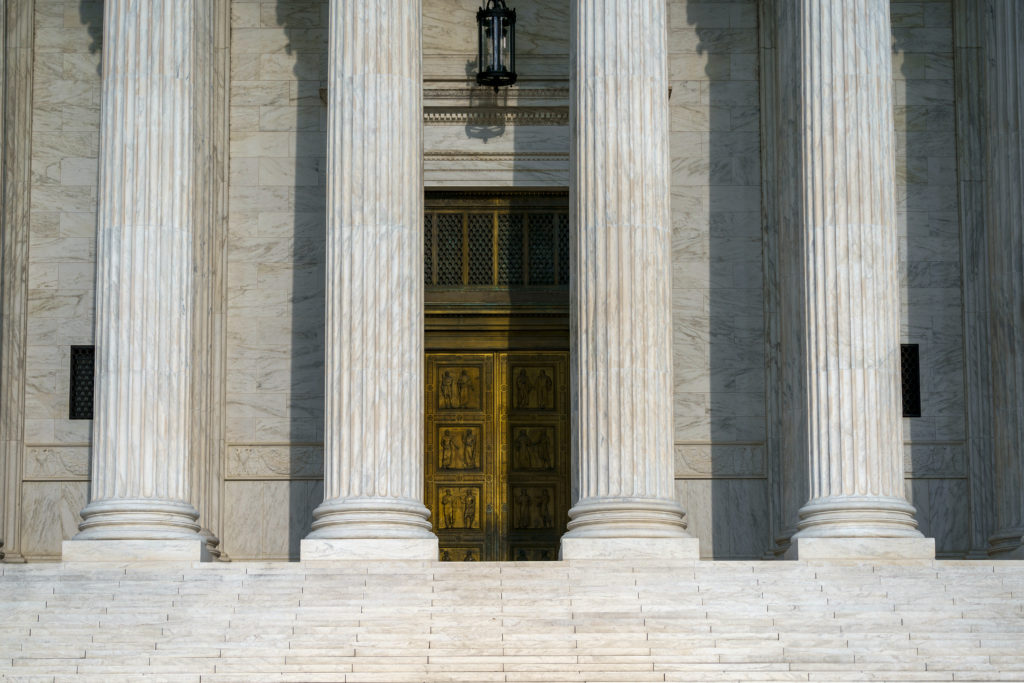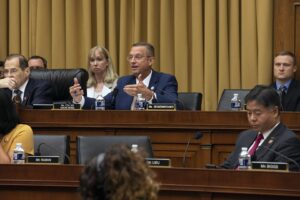
WASHINGTON (AP) – The Supreme Court returned to the courtroom Monday for the start of a momentous new term, after a nearly 19-month absence because of the coronavirus pandemic. Abortion, guns and religion all are on the agenda.
“This is going to be a historic Supreme Court term,” said Chelsea Sobolik, director of public policy for Southern Baptists’ Ethics & Religious Liberty Commission. “There are a number of cases we are actively engaged with, to ensure the voice of Southern Baptists are represented in front of our nation’s highest court. Our briefs cover a wide array of issues. From asking the justices to overturn the precedents set in Roe v. Wade and Planned Parenthood v. Casey, to ensuring a state cannot treat a religious organization in an unequal manner, to advocating for free expression for Christians. We are eager for these appeals to be heard by the Court and would ask all Southern Baptists to join us in praying for wisdom for the nine justices with these weighty matters.”
Chief Justice John Roberts was in his usual place in the center chair and Justice Clarence Thomas, the court’s longest serving member, was to his right. But almost everything else was a little different for a court that, like the rest of the country, still is dealing with the virus.
Inside the courtroom, eight of the nine justices took the bench at 10 a.m. EDT. Justice Brett Kavanaugh participated remotely from his home after testing positive for COVID-19 late last week, his voice echoing in the courtroom when he had a question to ask while his high-backed chair sat empty. Kavanaugh, who was vaccinated in January, is showing no symptoms, the court said. All the other justices also have been vaccinated.
Monday was also the first time that new Justice Amy Coney Barrett participated in arguments in the courtroom, despite nearly a year on the court as its most junior member.
Only about 50 people were in attendance – lawyers involved in the cases, reporters who regularly cover the court, retired Justice Anthony Kennedy, some of the justices’ spouses and some court employees. Justice Sonia Sotomayor was the only justice who wore a mask. Sotomayor, who has had diabetes since childhood, is the only one of the justices with a known chronic condition.
Monday’s cases were not among the highly anticipated disputes the court will referee this term. A few cases this term could prove to be historic.
The ERLC has filed or signed on to friend-of-the-court briefs in several of those, including Dobbs v. Jackson Women’s Health, perhaps the most substantial abortion-related case in decades.
Other briefs joined by ERLC include Carson v. Makin, a case involving a school-choice program in Maine, and Ramirez v. Collier, in which a Texas inmate is suing the state for the right to have his pastor, a Southern Baptist, lay hands on him as he is executed.
ERLC also has joined others in urging the Supreme Court to take up Seattle Union Gospel Mission v. Woods and Trustees of the New Life in Christ Church v. City of Fredericksburg Virginia.
In the opening session spectators sat in socially-distant spots and wore masks, although the lawyers removed theirs for their arguments. The lectern the lawyers were arguing from was also placed farther away from the justices than before the pandemic.
The court is requiring negative COVID-19 tests from lawyers and reporters who want to be in the courtroom. Lawyers who test positive will be able to present their arguments via telephone, the court said. That’s the way lawyers have been arguing before the court during the pandemic.
With the building closed to the public, the court’s hallways, normally bustling on mornings when the court is in session, were eerily quiet. A portrait of Justice Ruth Bader Ginsburg, who died just over a year ago, hangs in a main corridor, directly across from her friend and colleague who died in 2016, Justice Antonin Scalia. As visitors enter the building from its north side, the liberal Ginsburg’s portrait is on the left, the conservative Scalia’s on the right – in death as in life.
Monday was the first time the public was able to listen live to courtroom proceedings, via a link on the court’s website. The court first allowed live audio for the telephonic arguments it conducted in 2020 and earlier this year because of the pandemic.
From The Associated Press. May not be republished. Baptist Press Managing Editor Laura Erlanson contributed to this report.














